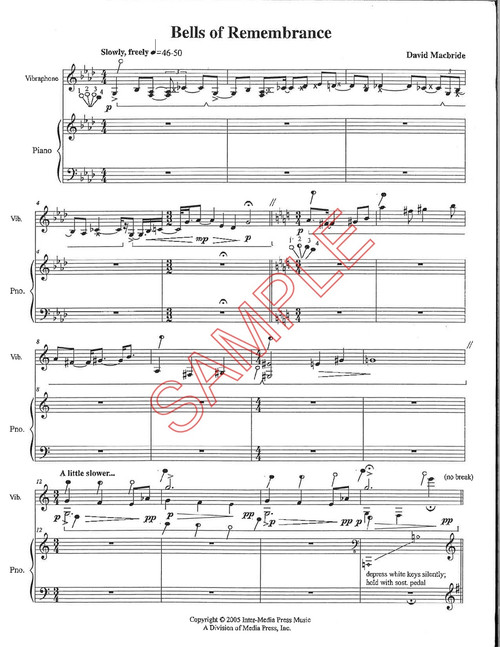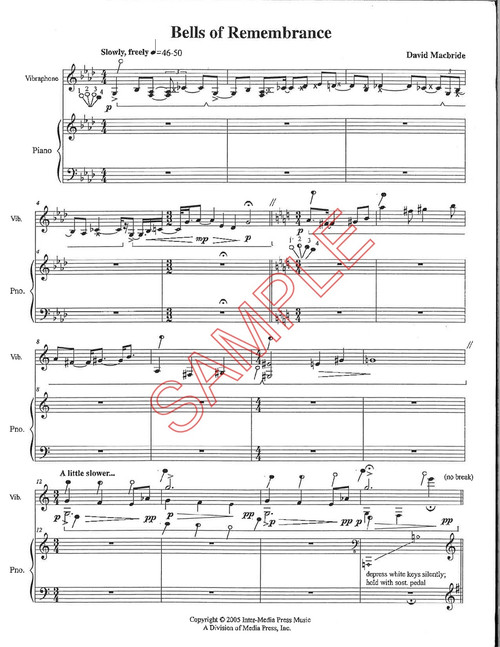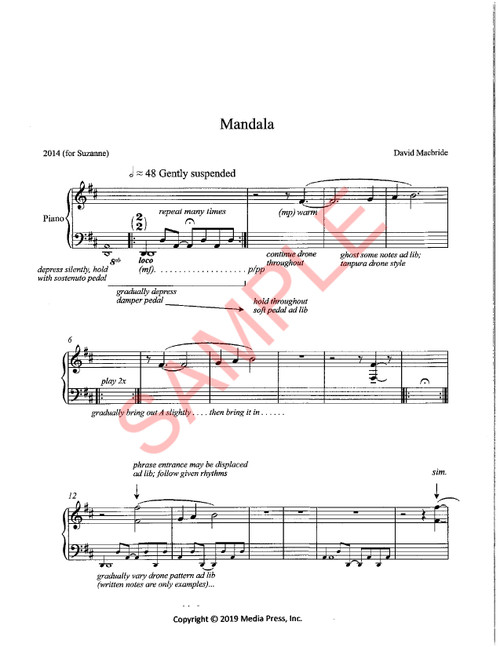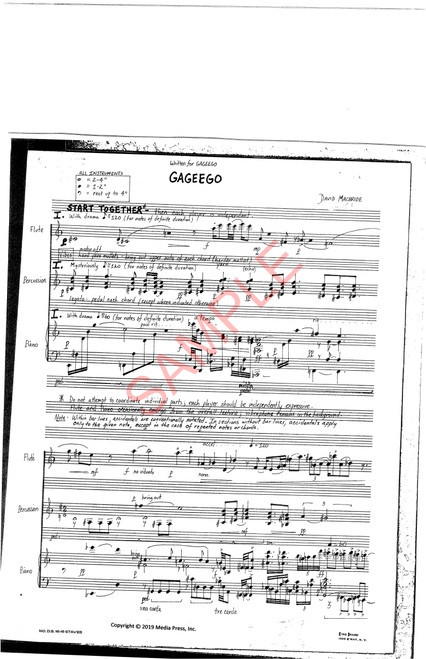For glockenspiel, vibes and piano. Bells of Remembrance was written for the piano and percussion duet "Conundrum" and premiered at the 3rd Annual New Music Festival in Las Vegas. The percussion part requires a set of orchestra bells (glockenspiel) and a vibraphone. Both players use additional small hand bells to great effect. Written in memory of all those who have lost their lives in the present war, past wars and future wars, it is dedicated to Jerry Hermsen, whose collection of bells inspired the composer. Duration: ca. 10 minutes.
Print size: Letter (8.5 x 11")
Review from Percussive Notes:
Bells have long been of interest to composers, as evidenced in music such as “The Bells,” a keyboard piece by 16th-century English composer William Byrd, and Berlioz’s “Symphonie Fantastique,” in which bells were brought into the orchestra. In “Bells of Remembrance,” written for the piano/percussion duo Conundrum (David Macbride, piano, and Ben Toth, percussion), the composer exploits the natural bell-like qualities of glockenspiel, vibraphone and piano. The piano requires a modest amount of preparation by inserting a piece of foam and pencil eraser caps between strings at their nodal points to produce harmonics two octaves above fundamentals. Each player also contributes the sounds of at least two small bells. This ca. 10-minute work, given its premiere at the third Annual New Music Festival in Las Vegas, was written to memorialize the casualties of wars--past, present and future. Following a short introduction for solo vibraphone, which makes effective use of the pedal, mallet dampening and a number of implement changes, Macbride sets in motion a “gently flowing, quiet and serene” stream of sixteenth notes in the piano. (Pedaling and mallet dampening requirements for the opening solo are clearly marked.) The glockenspiel contributes to a contrapuntal texture in which diatonic patterns blend into consonant tonal sonorities. Note values are subtly manipulated by dotting consecutive sixteenth notes, producing rhythms not unlike those that occur randomly in wind chimes stirred by a gentle breeze. An interesting technique is used that will be familiar to mallet percussionists who have played the Milhaud “Concerto for Vibraphone, Marimba, and Orchestra.” The vibraphone pedal is held down at the end of a phrase while the glockenspiel is played over the lingering tones of the vibe. The work features a number of improvised glockenspiel solos, and an extended ad lib duet with piano as the original key of G returns and bells and piano bring the piece to a close with unison sixteenth-note patterns. Throughout the course of the duet, volume plays a significant role. The prevailing dynamic level is piano, and, with the exception of the last measure, the maximum volume is only mp, which seems appropriate for music of “remembrance.” In the last two bars, a crescendo to forte in the piano and mezzo forte in the glockenspiel triggers an emotional release to close a work that offers a unique performance opportunity.
-John R. Raush
Demo:







